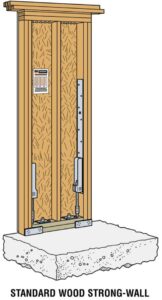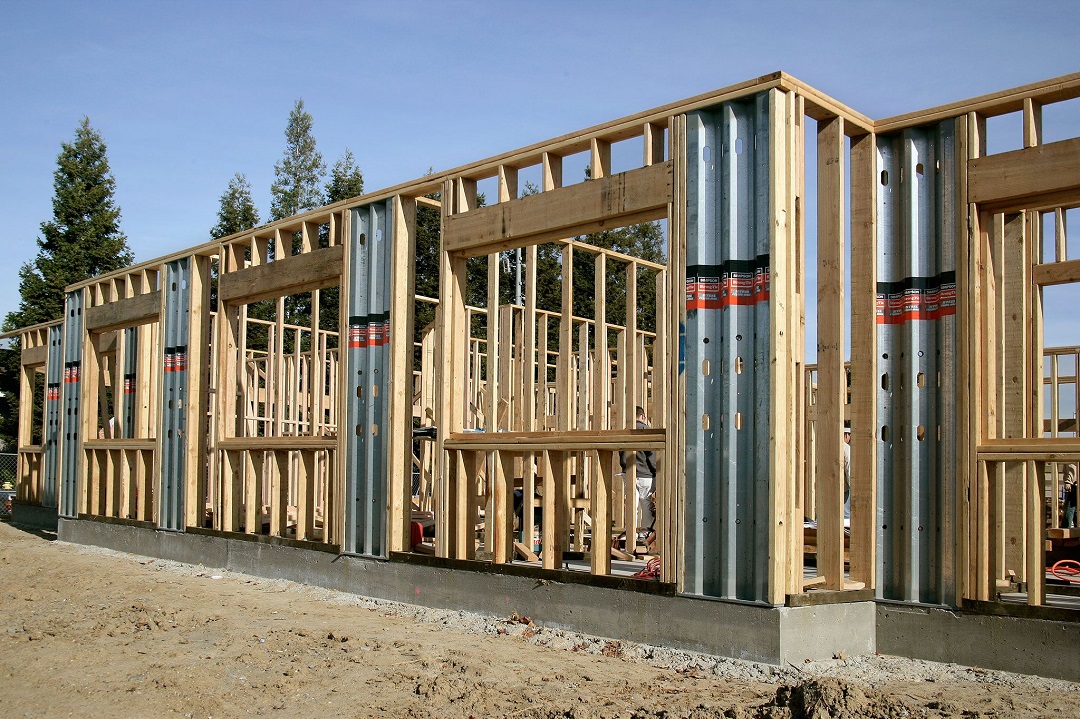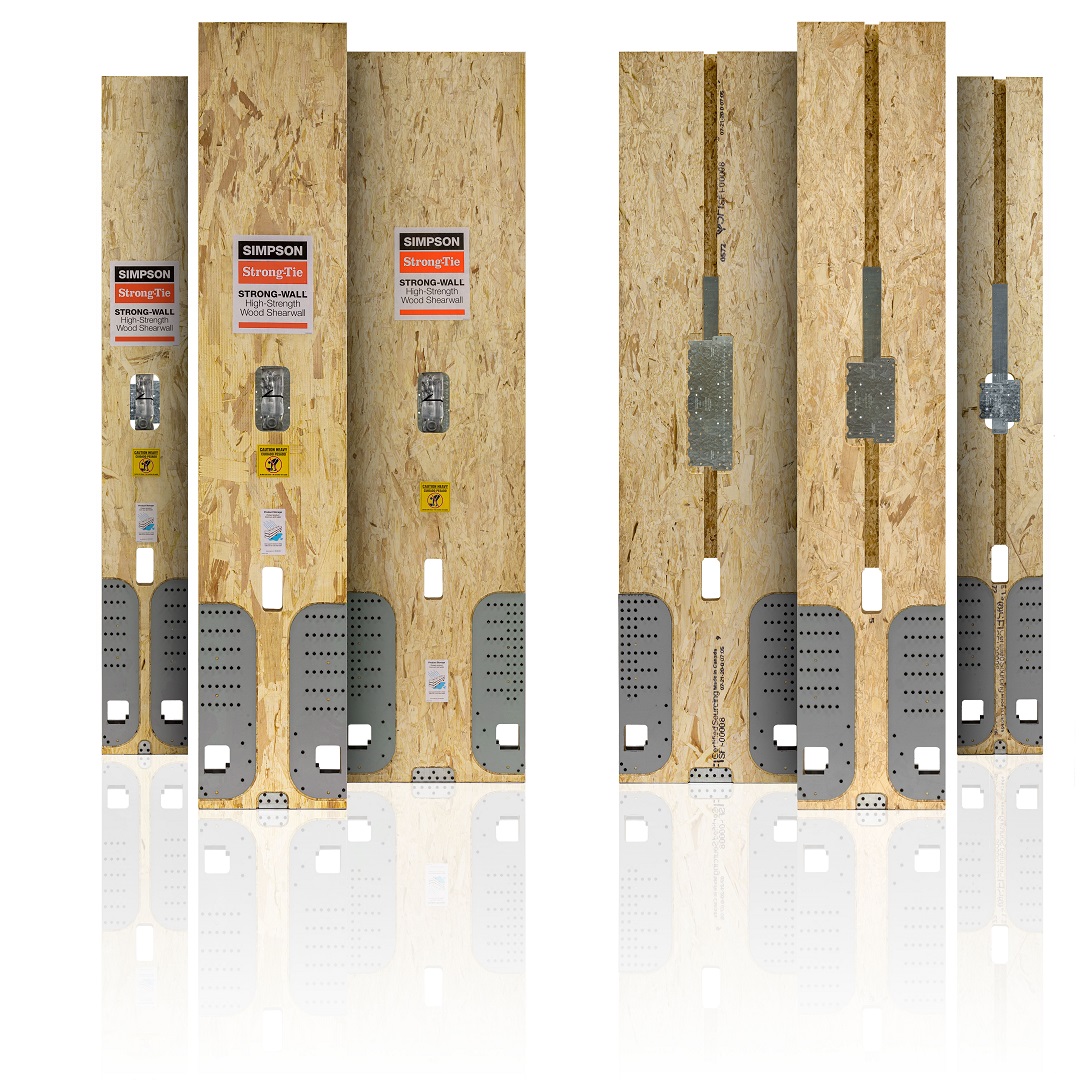The Simpson Strong-Tie Strong-Wall® shearwall was introduced in 1999. The 1997 Uniform Building Code had incorporated restrictive 2:1 aspect ratio requirements for wood structural panel (WSP) shearwalls in high seismic areas. We conducted extensive cyclic testing of complete wall systems (not just components) to prove that narrow Strong-Wall shearwalls achieved the high performance required for seismic and wind designs.

A few innovations allowed for the higher performance. We developed the HDQ8 holdown specifically for these narrow, prefabricated shearwalls to reduce deflection. Engineered glulam posts gave high loads and bear directly on the concrete, reducing sill plate crushing. Steel reinforcing strips improved the WSP performance and reduced nail tearout along the edges.

We developed our Steel Strong-Wall® shearwall to simplify installation and achieve higher loads.

The original Strong-Wall shearwall (SW) was replaced by the Wood Strong-Wall shearwall (WSW). Later improvements in the WSW led to the Strong-Wall high-strength wood shearwall (WSWH) that we sell today. Our Product Engineering Manager, Caleb Knudson, has written several blog posts about the WSW and WSWH. The initial WSW was discussed in a two-part post (Part 1, Part 2), and the WSWH in this post, and we summarized questions from a webinar here.



